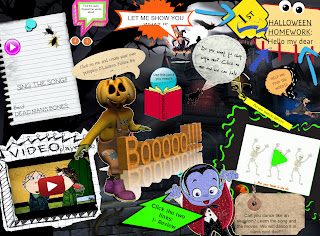ICTs provide a huge amount of possibilities to find materials on the web or to design them ourselves. That way we can access different cultural realities and develop a much more open-minded attitude.
Acording to Gordon Lewis ("Internet and Young Learners"), the internet provides children with a window on the outside world. It connets people from all corners of the earth throught information on websides or shared projects. When used thoughtfully, ICTs activities can promote tolerance and bring children together.
When using tecnology we need to consider how best it can be used and how it can complement our classroom-based work so it becomes integrated inyo our overall plan of work.
- We shall consider how ICTs can contribute to our`s pupils learning.
- We will look at methodology for using different types of technology.
The benefits for young learners
ICTs can
contribute to the global development of our pupils and complies with the
psychological, linguistic, cognitive, social and cultural objetives of most
language teaching programmes.
Using the internet in the FL classroom has many tangible benefits. The multimedia possibilities allow us to introduce content in diverse ways and thus appeal to learning styles or "intelligences" of more children.
Using the internet in the FL classroom has many tangible benefits. The multimedia possibilities allow us to introduce content in diverse ways and thus appeal to learning styles or "intelligences" of more children.
ICTs materials that we can use in class:
- words processors
- web based activities. We can create the activities we want pupils to learn in a funny way
- electronic dictionaries
- multimedia programmes, there are lots of them adapted to the different educational levels and needs
- authoring programmes
- presentations
- flashcards (they can be easily created)
- ...
Interactive whiteboards and laptops in the FL classroom can add a new dimension to teaching and routine lessons.
Using Glogster: is a social network that allows users to create
free interactive posters, or Glogs.
A "Glog", short for
"graphics blog", is an interactive multimedia image. It looks like a
poster, but readers can interact with the content.
Examples:
Examples:
In this task we try to design a Glog using
this tool. We Chose a topic for primary and design a poster in which we include
activities for the different learning styles (Gardner's multiple intelligences)
considering also the different skills (reading, writing, speaking,
conversation, listening).









No hay comentarios:
Publicar un comentario